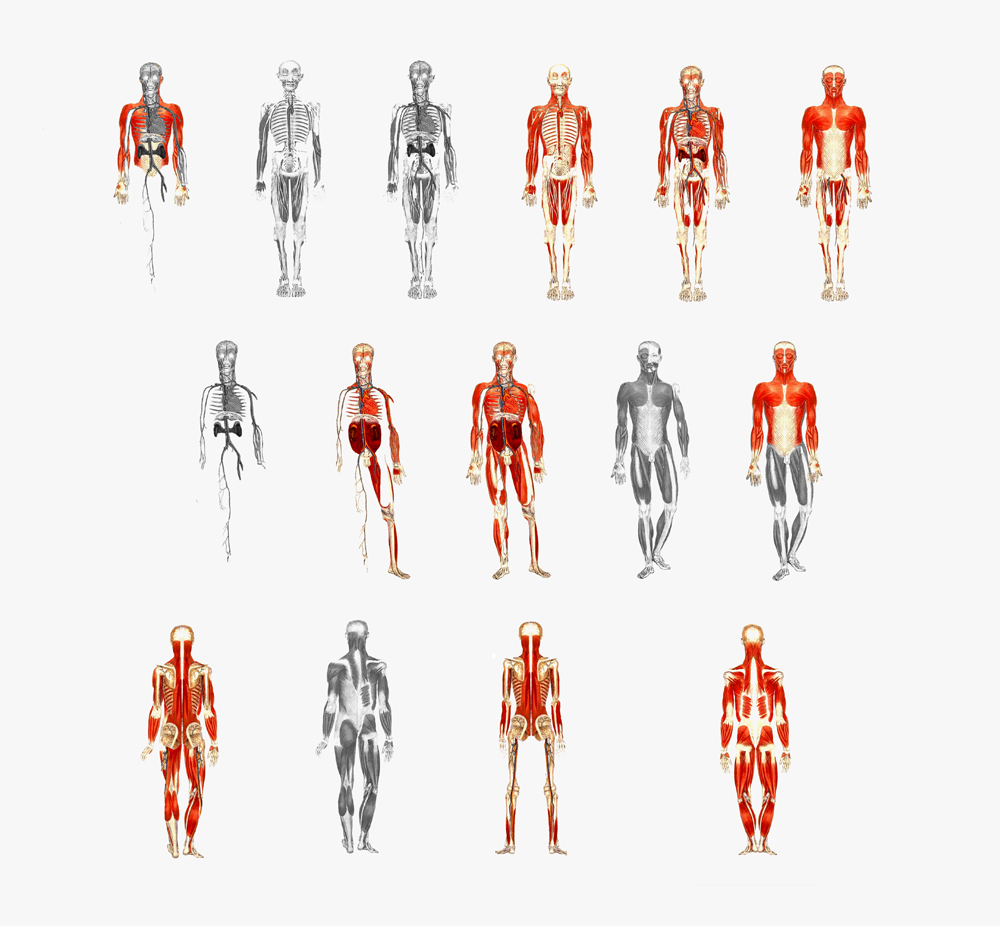

Above image: conceptual sketch of the layering plexiglass technique in multiple permutations
Pantheon – Innards of Consciousness
Artist: Chng Nai Wee
Date: 2003
Biopolis is the infrastructural core of the Singapore biotechnologies sector. Block 1 is the vanguard of this city – a cluster of buildings erected on raised ground. These individual buildings may be seen to blend into a single superstructure.
"Pantheon – Innards of Consciousness" is an installation of painterly figurative artworks evocative of icons that are protagonists of humanistic values and metaphysical inquiries. “Innards” refer to the anatomy as well as the part constituents.
“Consciousness” refers to the sense of collective identity, including the attitudes, beliefs, and sensitivities characteristic of the institution and community of Biopolis.
The term “Pantheon” originally described a Roman temple that was dedicated to all the gods. In time, “Pantheon” evolved to describe a public building dedicated to and commemorative of the heroes of a nation, and later evolved to refer to a group of luminaries who are key exponents in a field.
For Block 1, the artist creates a pantheon of figurative images evocative of the icons of Thinker, Buddha, Christ, and Vitruvian Man. These traditional figurative imageries have been reinterpreted and depicted by artists and craftsman over generations.
At Biopolis, the commissioned artist unites these disparate imageries thematically to reflect the humanistic aspirations of the institution and the grand scientific and metaphysical endeavors that shall take place.
The artist, a surgeon, selects Anatomy and the Human Body as the interweaving mosaic, for the Human Biomedical Science is the key priority of research as defined by the authorities.
Biopolis is primarily engaged in the discovery of the workings of the various body systems and the innovation of new biotechnologies to enhance the performance of these systems.
The artist devises a system of depiction: painting by body systems on plexiglass sheets. Muscular, skeletal, organic, circulatory body systems are painted on separate surfaces. The front and back of each plexiglass are painted sparingly but sufficiently to impart the form of the figure by relying on the viewer to complete the image cognitively.
When the layers are seen superimposed and separated by intervening space, the viewer experiences depth and texture.
Depending on the various combinations of superimposition, separation, juxtaposition, and composition, different images are formed for viewing. The plexiglass sheets are also reversible, allowing a different view from the other side. The transparent plexiglass sheets allow a suspension in space and blending with the glass façade.
The modularity allows for interchange of plexiglass sheets between one work and another. The artist intended for the grand composition of these four imageries as a single installation that can be experienced navigationally.
The design for the blending of the individual artworks to a composite echoes the design for the blending of the buildings of Biopolis into a composite.
These iconic imageries are more allusive than obvious to the viewer. By the composition of the imagery, the viewer can appreciate the form of the figure, and the nature of the pose. Beyond the act of the figure, there is nothing that states categorically what the figure represents.
By repeatedly viewing the artworks over time, the viewer unravels the subject references, relates them to his consciousness, links the artworks together, and relates them to the culture of Biopolis.
The symbolic values the Christ-like image bear are humility, sacrifice, love, devotion, and fraternity. The anatomical dissection of the body of Christ, exposing the human innards, is a simple powerful statement of the universal agreement that Christ took the form of a human.
The Vitruvian Man, modelled after the writings of Vitruvius, is a paragon of the interplay between Art and Science. The Virtura Man symbolizes creativity, multi-disciplinary integration, health and wellness, the physical beauty and sublime proportion of the human form, and the human architectural scale.
The symbolic values that the Buddha-like image bear are spirituality, serenity, discipline, selflessness, and enlightenment. The meditating man represents the Eastern philosophy-religion-mysticism that focuses on insight and inspiration from within.
The symbolic values that the Thinker-like image bear are cogitation, academic rigor, intellectual pursuit and purpose. The man in pensive thought represents the Western philosophy of rationalism, empiricism, and logic.